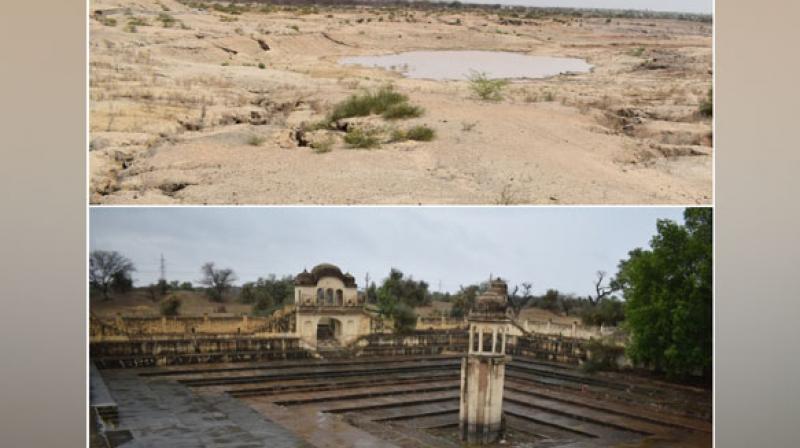Save water through sustainability
Sustainability is the key to save water.

Washington: Like many other places, villages around the Thar Desert have also been pushed to extreme conditions due to lack of water and soaring temperatures. The severity has left people in rural areas disturbed, but not distracted, making Thar the only desert in the world with an abundant density of life.
In areas near the desert, salty water is extracted from beneath the earth and sweet waterfalls from the sky. However, the dense rainfall makes the desert a swamp with the entire area becoming prone to turning into a saline lake.
Luckily, people around the region have moulded their lives according to the available resources, by mutually cooperating with other species as well. They have created unique treasures of water storage for themselves, their animals (especially cattle) and for future generations in order to move ahead smoothly.
Surprisingly, in some parts of the country, even where there is more rainfall than the Thar Desert, people face scarcity of drinking water as they waste the source in abundance while people of the desert avoid the situation by judiciously utilising water.
For instance, people from other areas pull underground water from heavy capacity-powered pumps developing the culture of tap water and ultimately forgetting the value of water. Whereas, residents of villages around the Thar Desert walk miles and miles just to fetch a jar of water.
Who is to be blamed for the wastage? People or the government, who in the last five to six decades provided water to the people, making them forget the traditional water sources as well as making them eyewitnesses to their own methods of wasting water.
Other than wasting water at homes, people also ruined natural or traditional water sources. In cities of Rajasthan such as Barmer, Jaisalmer, Bikaner, Churu, Nagaur, Jodhpur, Pali and Jalore traditionally harvested rainwater storage, ponds, rivers, streams, Kunds (small ponds), Baavdis (stepwell), pure artistic ponds made of lime and stone had been all destroyed by the villagers by filling them with soil and garbage.
Unfortunately, they have now become places of illegal mining. The courtyard of the house well known for its cleanliness is now used to get rid of dead animals and trash. An eyewitness, who saw the construction process of ponds, other water sources and the wastage caused due to it, took to his book 'Aaj Bhi Khare Hai Talaab' to share some of his experiences.
"Hundreds and thousands of ponds did not appear from oblivion. There were some who commissioned work for these ponds and there were many who actually constructed hundreds and thousands of them. But in the last two hundred years, they have been turned into zero by those who have learned a little from the new education," wrote late Anupam Mishra.
Perhaps this is a time shift. The new generation that measures the world with a snap of a finger has seen these water sources being turned into garbage dumps in villages; they have seen water only out of taps or in bottles. They are least concerned about these water sources, nor do they drink water from them. Due to the lack of communication between the two generations in regard to knowledge and culture, the gap between them has widened
Time has changed; nature is changing and weather patterns are changing too. In the desert, there is no crisis of water. The method of harvesting rainwater is in the doldrums. There could be a crisis of water when there is disruption in the supply of water through canals and pipelines.
There is no reason why old water sources can't be restored; it is only a lack of will. Lately, the government, civil society organisations, and media establishments have started taking care of traditional old water sources, harvesting rainwater, organising the society to spread awareness on water issues and are driving a campaign to build a unit, ten units, hundreds of thousands of units of these water sources.
The government has created the Ministry of Water Resources.
By combining manpower and hydropower, society has the opportunity to revive the traditional water sources. To rejuvenate these sources, to hand over these priceless treasures into the hands of the future generation, there is a need to raise thousands of hands again so that the coming seven generations can live with four million species of living beings.
The views expressed in the above article are that of Dilip Bidawat of Charkha Development Communication Network.

